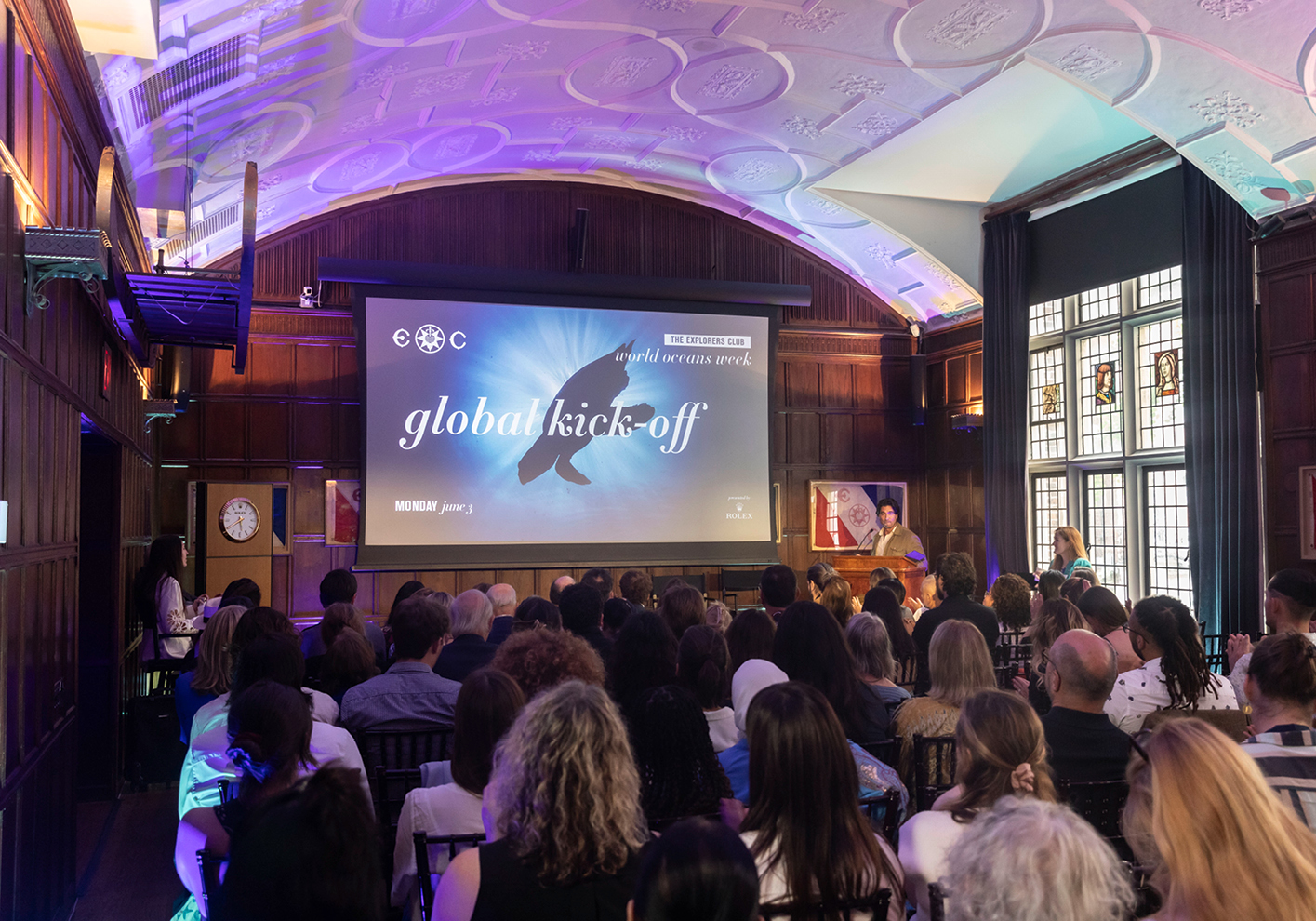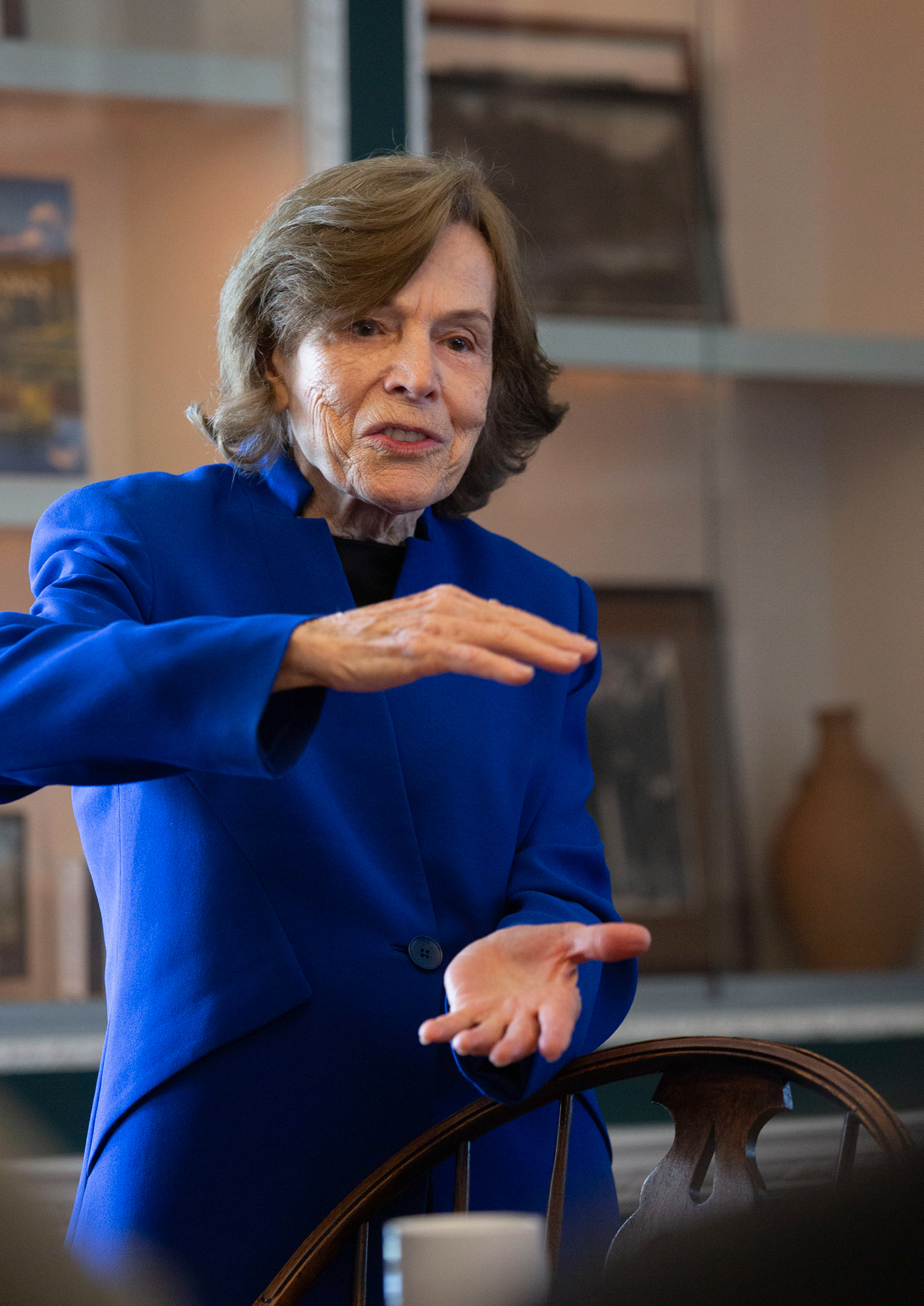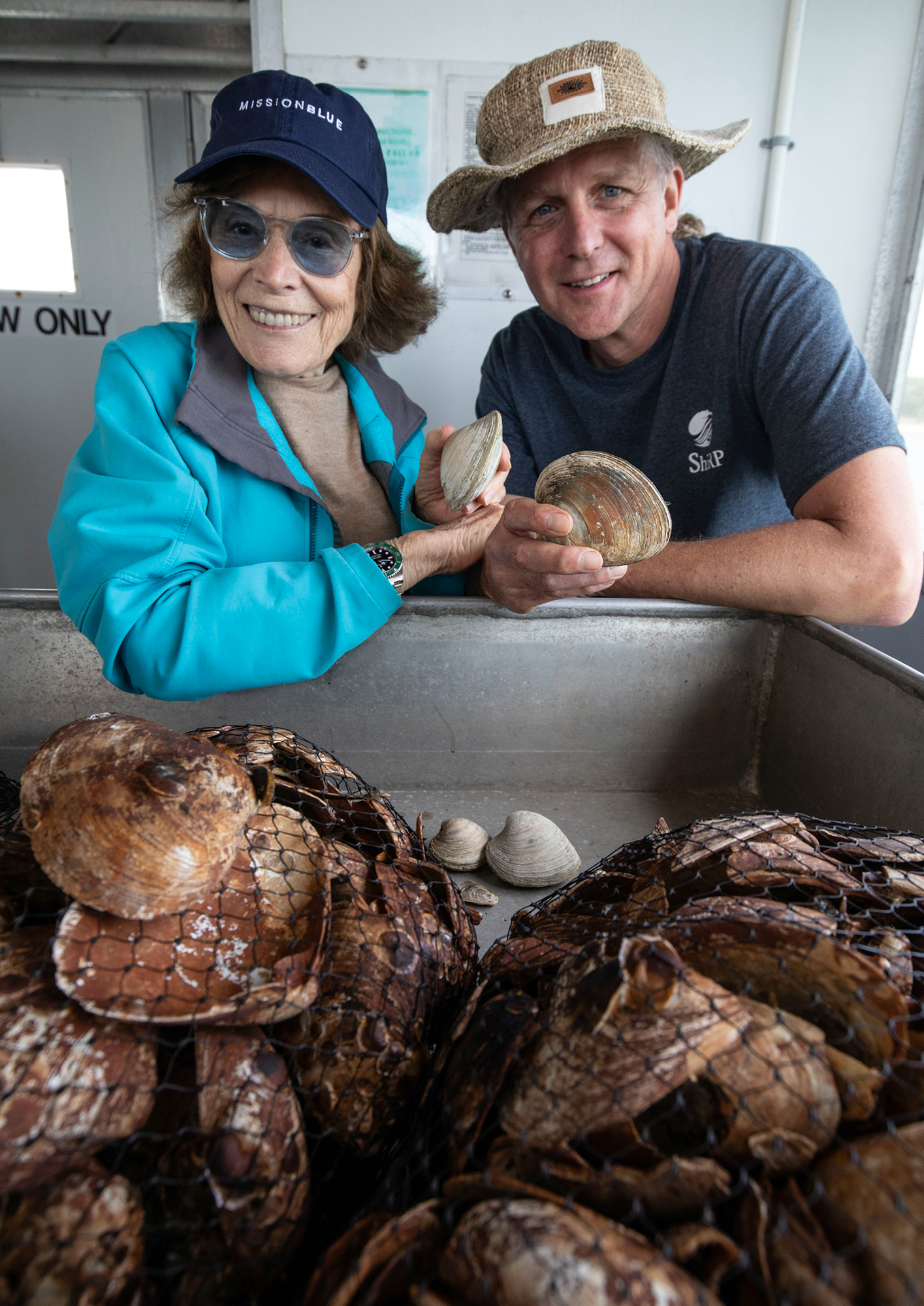WORDS
Peter Howarth
Marine biologist Sylvia Earle is known in the world of exploration as “Her Deepness”, on account of her lifelong work with the oceans. She has spent more than 7,000 hours underwater, and in 1970, lived underwater in a laboratory leading a team of aquanauts for a research project for the US government. In 1979, she descended 381m (1,250ft) in the Pacific Ocean to set the world untethered diving record. Now a National Geographic Society Explorer-in-Residence and, since 1982, a Rolex Testimonee, she studies the oceans with a specific mission to protect them.
Winning a TED Prize in 2009, Earle founded Mission Blue, an organisation dedicated to creating protected areas she calls “hope spots” in areas of the ocean that she identifies as critical; Mission Blue is a Rolex Perpetual Planet Initiative partner. Brummell caught up with this extraordinary scientist at the Explorers Club in New York during World Oceans Week 2024.

‘I wish I could right now get in a little submersible with you and just dive in. And make that transition from the sunlit part of the ocean, where you can experience the joy of getting out of this terrestrial part of the planet and into the blue part, the ocean.
‘You’d see, first of all, that it’s not just water. That’s a big surprise to a lot of people – you think, “I’m going to go in and I’m going to just enjoy this weightlessness”. That is part of the pleasure of getting into the sea, whether you’re just in a Speedo, or in a diving suit, or in a submarine. You feel that change. But the real discovery is to see that the ocean is alive.
‘You might think you’re going down to see the creatures in the sea, but to actually see them coming to look at you, that is so unexpected! Whether it’s whales or fish or squid or octopuses, they’re curious, they seem to be asking, “Who are you? What is a primate doing here?”. You’re something unusual and they want to check you out.
‘As you go deeper, it gets darker. You transition through shades of blue that don’t even have names. Eventually, it’s just dark. That happens depending on where you are. It could be at 30m; it could be at 300m – to the edge of light, the twilight zone. And after that, it’s dark. All the way to the depths of the ocean.
‘Just think of this: most of life on Earth – most of life – lives in the dark all of the time. And it’s mostly in cold water. Even in the tropics, below 1,000ft – 300m or so – it’s pretty chilly. Get down to the bottom, it’s near freezing throughout much of the ocean. It’s not freezing, because if it freezes, ice is lighter than water and comes back to the surface. That’s why we have ice-covered lakes, rivers and the polar regions. If it froze at the bottom, from the bottom up, we’d have a column of ice. It’s not that way. Under the ice it’s warmer.
‘In the ocean, I’ve seen so many things that are new species. It’s so easy to find new species. The deeper we go, the less we know, and more new discoveries we are finding. And the more damage, the harm that we’re causing. With deep-sea mining on the horizon – why would we even think of doing such a thing, knowing what we now know?
‘The deepest places of the ocean are perhaps the wildest, least-disturbed places on the planet, yet it’s hard to go anywhere and not find evidence of our existence. There was a time when I was thrilled to go down 1,000m all by myself in a submersible, a clear bubble in the darkness, and see the luminous flash, sparkle and glow of creatures that have never known anything about humans or our existence on the surface. And I did see this glint that reflected the lights from my little submersible. And I was so excited: “Who are you?” And I went very carefully, very quietly, making the least possible disturbance. I didn’t want it to swim away. And I succeeded. I got close enough so I actually got to see what it was, who it was.
‘It was a soda can. It was a can. It was a stupid can that somebody threw over the side.
‘Even in the deep sea, we are leaving our mark.

‘There are natural sounds in the ocean, but nothing like the sounds that we have imposed in recent decades. Mostly in my lifetime, motorised vehicles in the ocean, in the sky and on the land have created a new soundscape for the planet. And a new lightscape. When you fly across the land or sea at night, it’s not dark anymore, the way Earth has been until very recent times. Cities create unnatural illumination that probably confuses a lot of creatures that are migrating across vast distances. They also get distracted by the sounds and the changed chemistry that we have created across the land and now in the ocean as well. Fishing fleets and thousands of commercial vessels have created lights and sounds that are impacting the ocean’s ancient systems that have to adjust, or not.
‘Humans have brought many radical changes to the planet in my lifetime. I am a witness. David Attenborough talks about being a witness to the loss of wildlife on the land, the changes in forests, the change in the air and the water. I’ve witnessed change in the ocean – and if I seem disproportionately motivated, passionate, driven, it’s because I’ve been privileged to see more than most people have of what’s going on beneath the surface of the sea.
‘I’ve lived underwater 10 times. I’ve witnessed change over more years, been around longer than most and have used more submersibles – I mean, most people haven’t ever been in a single submarine. So how can I not come back and say: “You’ve got to see; I want you to know what it’s like and I want you to come too; I want you to see; I want you to dive in. Whether it’s 10ft or 1,000ft, or 10,000ft.”
‘We’re explorers on a scale that no species has ever been. Previous generations of our fellow humans could not see or know what we now know. We need to put it to use to have a future informed by this new knowledge, this new awareness of why the ocean matters to everyone, everywhere all the time, even if you’ve never seen the ocean or touched the ocean.
‘Take a breath, the ocean is touching you; take a drink of water, the ocean is there, touching you. It’s water – 97 per cent of Earth’s water is ocean and it comes back to you, as rainfall. It comes back to you with the water that we take from wherever we take it – lakes, rivers, streams. We’re all connected in every way to the existence of the ocean that makes Earth habitable.
‘Where the water is, is where life is. We haven’t thought of Earth as an ocean-dependent system until we have had the gift of seeing, measuring, making the connection between climate and the ocean. It now seems obvious that everything we care about, starting with our existence, is possible because of the existence of the living ocean. Knowing is the key to caring, and with caring, there is hope that the current trajectory of decline can be turned to recovery and stability.

‘Now we know. Coral reefs have declined by half. In my lifetime, there has been a 90 per cent reduction of tunas and sharks, cod and herring, of many of the wild animals that we now still take for granted in our supermarkets, in our restaurants. We think of seafood as just a given. We should ask “Who are you?” “Where did you come from?” “How old are you?” “How long does it take to make a tuna?” What is the lifecycle of the creatures that we complacently take as if they will always be there, even though there’s clear evidence that the volume of ocean wildlife has been reduced by about half since the 1950s.
‘How long before they’re all gone, if we keep taking ocean wildlife on the scale that we are taking them right now? Even though we’re aspiring to policies for sustainable use of the ocean, how can we do this when 90 per cent of some species are gone? With only half of the life left in the ocean that was in there when I was a child – when David Attenborough was a kid – that’s serious loss and serious cause for concern.
‘So, what can be done to take care of the ocean that takes care of us?
‘One of the most important things we can do is to look at ocean life as wildlife. And no matter what the rules and regulations are, think about what you consume individually or what you’re supporting in terms of protection. Use whatever you’ve got to change this trajectory of decline to recovery. Every bite of wildlife taken from the ocean counts. We’re really good at killing life in the sea. Can we get really good at caring? Can we make it cool to care?
‘Most importantly, the best reason for hope is taking action to support protection of the Earth’s remaining diversity of life by protecting wild places, land and sea, and to restore health to areas where damage has occurred. The widely embraced goal of protecting at least 30 per cent of the land and sea by 2030 is getting traction. As never before, and maybe as never again, this is the time to protect this mostly blue planet as if our lives depend on it. Because they do.’





